Recently I came across this curious little building via Dornob. It’s a design by the architects at Peter Gluck and Partners. The building is a cube, measuring 20-feet on each side. The interior space mesures 720 square feet. It’s not a house, but serves as a library for a private collection of 10,000 books on Japanese history.
The lower level is reported to be the primary storage space for the books. The upper level is a light-filled open space with fully opening windows.
The first thing that came to mind when I saw this design is that it could also serve as a secure cabin, albeit with some modifications to the open upper level. For example if one were to add sliding steel window covers and reduce the number of windows this little building could be sealed up like a fortress when the owner was away.
When I think sustainable tiny house, I don’t usually think impenetrable concrete bunker – but I know some of my readers have been looking for clever designs for secure remote cabins. Concrete and steel are definitely not high on the list of sustainable materials but they can sure make a tough place to break into.
Photo credit to Peter Gluck and Partners
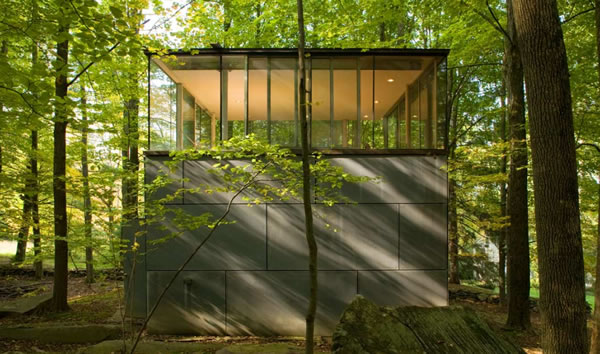

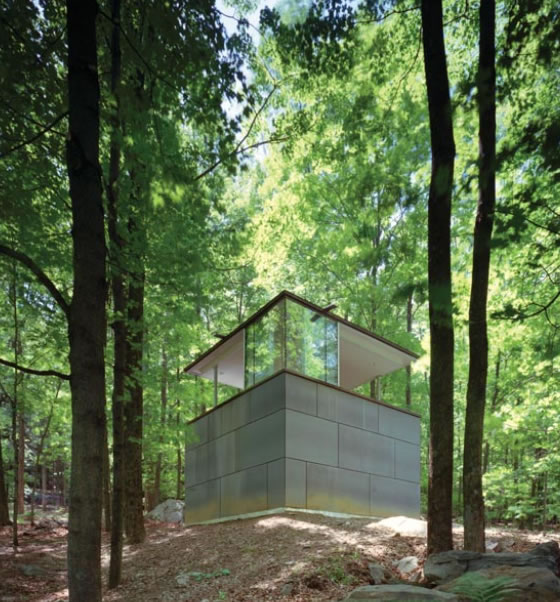
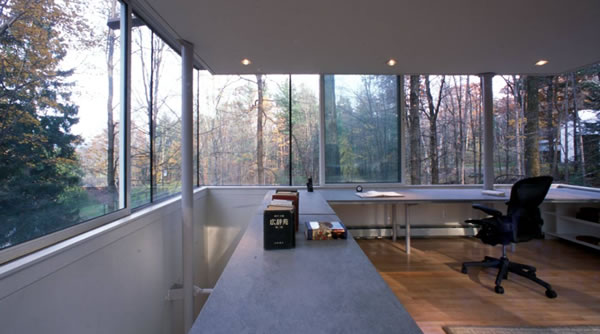
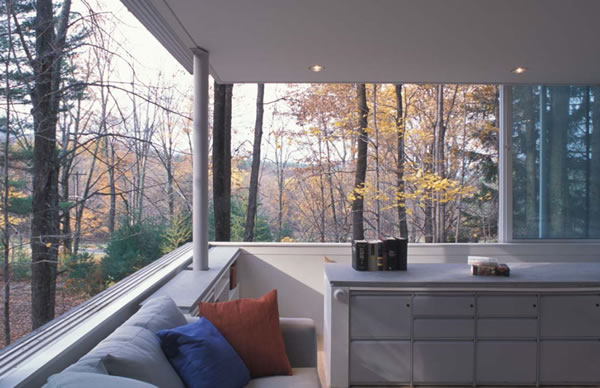
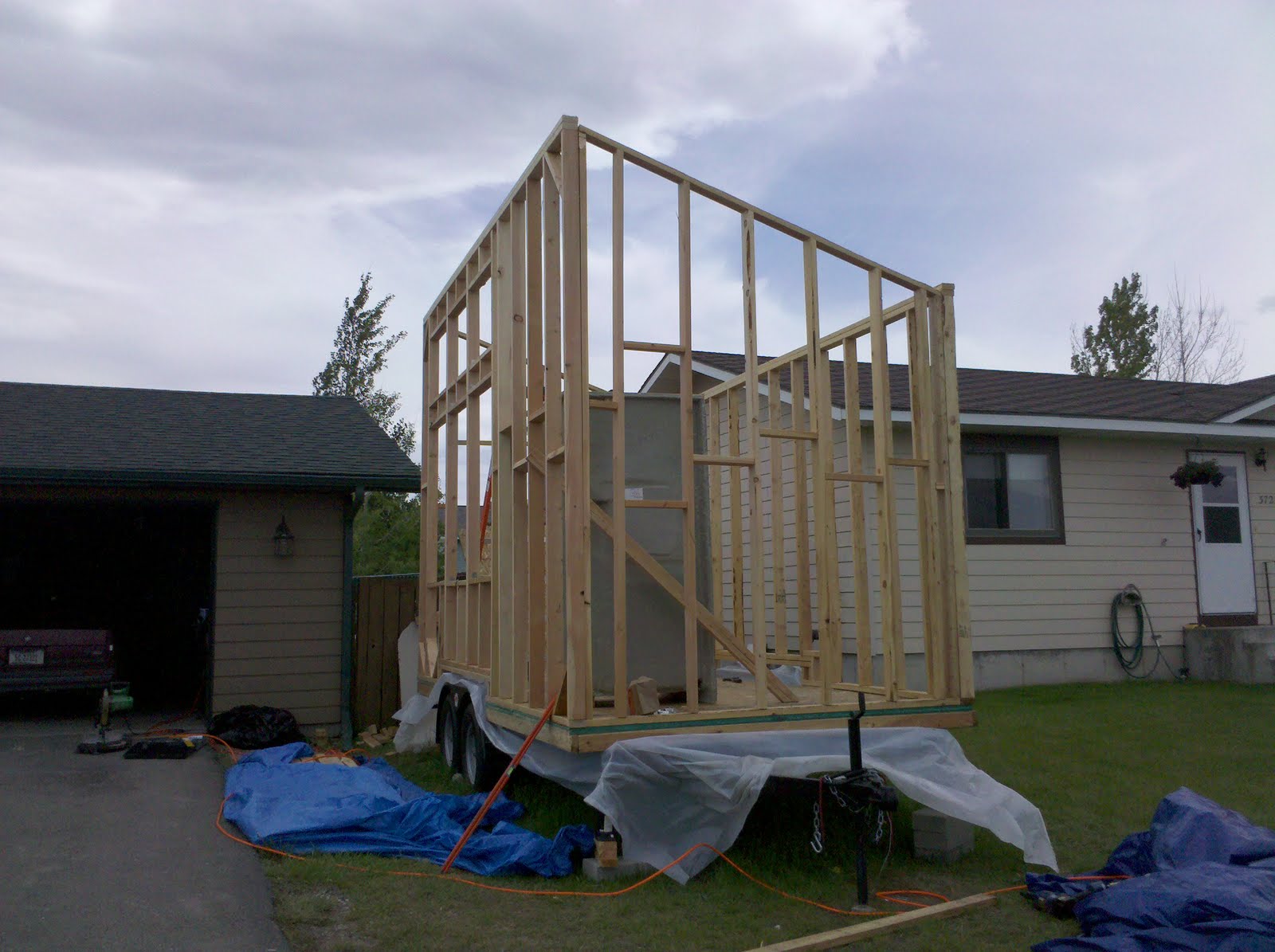
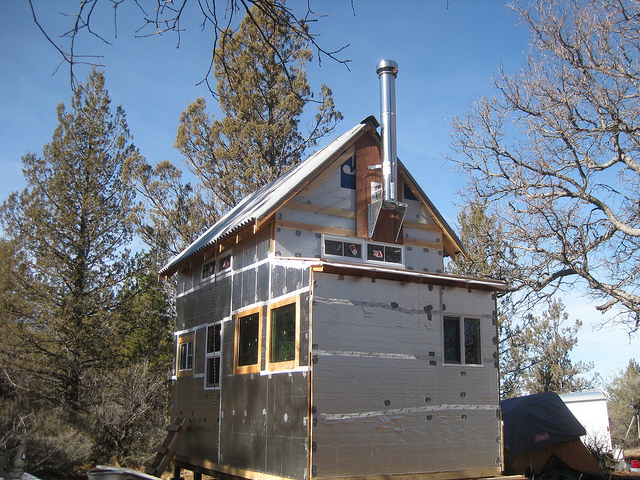

Concrete and steel pre-cast panels would be affordable and allow a quick build. The Green Book recommends both concrete and steel for their sustainability, low total life cost etc. Soften them with lichen and climbing plants and the aesthetics might be reasonable too!
I agree that security is a difficult issue but it would also be possible to build a wood structure with real shutters on the windows and be no less secure. When you build a fortress for when you are away, unfortunately you have to dwell in the same fortress when you are there.
..and I have to disagree with said Green Book, steel and concrete are no more sustainable than oil is. All are mined with finite resources, processed with cheap fuel and are heavy and are typically transported long distances. This Green book must have a strange definition of sustainability or else it’s financed or written by one of the steel or concrete companies.
Here in NZ, the power companies are laying claims on the last wild rivers ( currently pristine, ecologically sensitive and unique and a mecca for whitewater tourism) and making plans to dam them, all in the name of additional energy required to fuel a concrete factory. Sustainable?
SteveR your right about The Green Book sponsors! But this is what the industry in the UK is using and it’s the construction trades bible!
I would of thought the 3 Gorges dam experience would have demonstrated that this is definitely not sustainable practice by any measure.
It reminds me of one of those solar lanterns that go on top of posts, just needs a copper pyramidal roof and solar collectors. Bet it looks interesting at night. I think concrete and metal are rated for their longevity – after the initial production stage, especially in a damp and termite infested area they would be good for a very long time compared to wood, and with less maintenance energy input required. There are also thermal mass considerations. I’m not saying they’re green materials per se, but there are some long term advantages to their use that may outweigh the initial input. Much depends on the particular circumstances involved. You could also make the lower section out of rammed earth or some other strong material instead of concrete. If you get really into it you could make the lower section out of stone and have your own castle tower.
That is gorgeous. I would love living in something like that.
Concrete and steel is very much \sustainable\, because the combination lasts as long as you want it to. This idea that building materials have to be derived from spit and soybeans to be sustainable is a bit skewed I think. Let’s face, neither steel or concrete is going extinct, but there is plenty of it around that could be reclaimed, and reused in a creative way… Old steel and concrete blocks. Think of the houses made from converted shipping containers. That’s very clever, and sustainable. Combine that with solar or hydro power, and we’re talking certifiable green living.
Estimated price per sq ft please